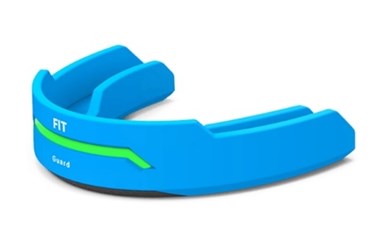Concussion-Monitoring Mouthguard Coming To Market
By Chuck Seegert, Ph.D.

A sensor system placed inside a new mouthguard design could provide real-time alerts on concussions during high-impact activities. Data from the device could inform coaches and parents on when someone needs to get further evaluation from a doctor.
Concussions and damage to the brain from impact trauma can be difficult to detect. In some cases, symptoms may only manifest some time after the impact has occurred and, in the case of certain sports, athletes unknowingly continue their activities on the field.
“Many athletes return to the game without knowing they have an existing head injury and cause further damage,” said Anthony Gonzales, the executive director of a new company called Force Impact Technologies, in a Forbes article. “With the launch of FITGuard, we hope to provide a full-service approach by detecting high-impact head injuries and pushing for further evaluation from a physician, when necessary.”
The new mouthguard system is called FITGuard, and it incorporates accelerometers into a mouthpiece similar to those currently used by football players and boxers. The sensor detects linear and angular acceleration, a combination that is most likely to indicate when a concussion has occurred, according to the company website. By placing the sensors in the molar area of the guard, the mouthpiece is designed to monitor the brain as closely as possible. Impact intensity is indicated by LED lights in the front of the guard using a red, yellow, and green visual system, with red representing the highest level of impact.
In addition to the mouthguard design, the system incorporates wireless transmission via Bluetooth communication and a smartphone. This data is then used in conjunction with a prepopulated user profile to generate impact severity. Cloud-based data storage is planned to provide a database that the company will maintain for comparison. This will allow users to compare their experience with others as the database matures.
Long-term and continued exposure to impact may lead to chronic traumatic encephalopathy (CTE), a neurodegenerative condition that was first detected in boxers and retired football players. Recent advances now allow this condition to be detected sooner using positron emission tomography, according to a recent article on Med Device Online.
Image Credit: Fitguard
